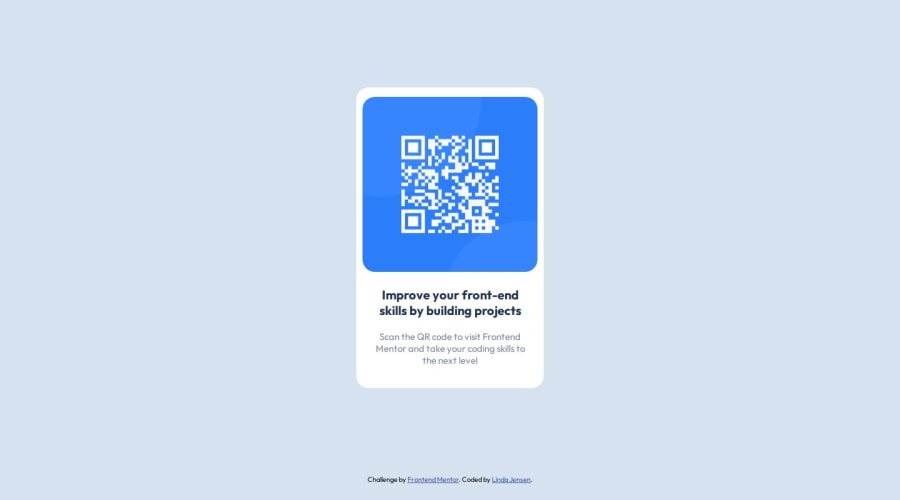
Design comparison
Solution retrospective
This might sound silly, but i think the thing I'm most proud of is that I didn't give up. I've been in a place for a few weeks where things have been kind of hard and I don't get a lot of enjoyment out of anything. But I keep coding and I'm not giving up. When it comes to the actual code I think what I'm most proud of is centering a div (is that embarrassing?). I'm new to coding and I never seem to be able to figure that out without ChatGPT, but not this time. I figured it out by myself (there was some Googling involved).
I'm not sure if I was suppose to use media queries in this, but it didn't seem like it was needed. But if I was to redo it I'd probably pay more attention to that.
What challenges did you encounter, and how did you overcome them?Centering a div. But I did not take the easy way out and ChatGPT'd it. Not that there's anything wrong with that, but for me what I've noticed is that when I just AI something it doesn't seem to stick. And I'm new to this so I need to find other solutions as well. I want to really learn this and so I can't just take the easy way out as soon as I get frustrated.
What specific areas of your project would you like help with?- I need help with how I get the padding (you know the white frame around the qr-code and text) even all the way around? I just couldn't figure it out. But then again, me and padding needs to get better acquainted with each other. So maybe you could help a gal out.
- I also really want the question "Was I suppose to use media queries in this challenge?" answered. Because the site worked fine until around 318px in width so I'm thinking no. But what's your opinion?
Community feedback
Please log in to post a comment
Log in with GitHubJoin our Discord community
Join thousands of Frontend Mentor community members taking the challenges, sharing resources, helping each other, and chatting about all things front-end!
Join our Discord
